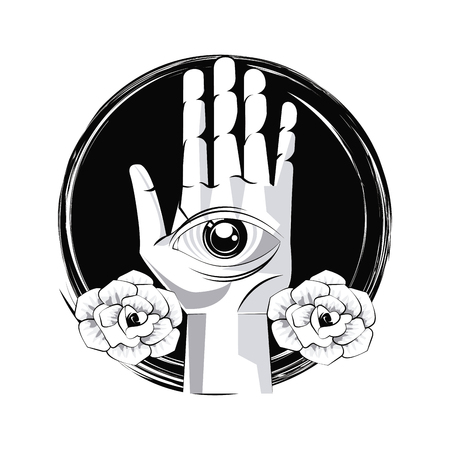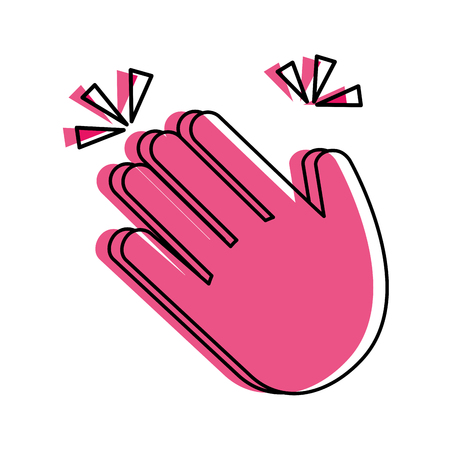1. Hollywood’s Fascination with Palmistry
Hollywood has always been drawn to the mysterious and the magical, and palmistry—also known as chiromancy or palm reading—fits right in. From classic black-and-white films to modern blockbusters, palmistry has become a popular storytelling device that adds intrigue and a sense of destiny to movie plots. But how exactly does Hollywood use palmistry, and what impact does it have on audiences?
How Palmistry Shows Up in Movies
Palmistry is often used in films when a character seeks insight into their future or fate. It usually happens in scenes set at carnivals, fortune-telling booths, or during dramatic moments where a wise or mysterious figure reads someone’s palm. These scenes are not just for fun—they help build suspense and add an air of mystery.
Common Ways Palmistry Is Portrayed
| Film Example | Scene Description | Purpose in Story |
|---|---|---|
| The Wolf Man (1941) | A fortune teller reads the main character’s palm and warns him about danger. | Foreshadows future events and sets a supernatural tone. |
| Harry Potter and the Prisoner of Azkaban | Professor Trelawney examines students’ palms during Divination class. | Adds to the mystical world-building and character development. |
| The Curious Case of Benjamin Button | A woman reads Benjamin’s palm, hinting at his unusual life journey. | Introduces themes of fate and destiny. |
Influence on Public Perception
By weaving palmistry into storylines, Hollywood shapes how people think about it. Many viewers start to associate palm reading with magic, mystery, or even danger because of these portrayals. In reality, palmistry has a long history and is practiced around the world as a form of self-reflection or entertainment—not just fortune-telling. However, the silver screen often exaggerates its power for dramatic effect, making it seem more mystical than it is in everyday life.
Palmistry’s Mystical Allure for Characters
Palm reading scenes are especially popular when filmmakers want to highlight a character’s journey or transformation. Whether it’s a hero learning about their destiny or a villain warned of doom, these moments give characters depth and make their stories feel larger than life. For audiences, it creates memorable scenes that stick with them long after the credits roll.
2. Common Misconceptions Portrayed Onscreen
When it comes to palmistry, Hollywood often takes creative liberties, making the art of reading palms seem more magical or dramatic than it really is. These on-screen portrayals can shape how Americans think about palmistry, but they frequently get things wrong. Let’s break down some of the most common misunderstandings seen in movies and TV shows, and see how they compare to real-life palmistry.
Instant Predictions and Over-the-Top Reactions
In many films, a fortune-teller glances at someone’s palm and immediately gasps, predicting wild events like sudden death or instant fame. In reality, palmistry is much more subtle. A real palm reader considers the whole hand, looks at several lines and shapes, and offers insights—not shocking one-liners or dramatic prophecies.
The “Life Line” Myth
Perhaps the most famous misunderstanding is about the life line—the curved line that arcs around the base of the thumb. Movies often show that if your life line is short, your life will be short too. But in actual palmistry, the length of this line has nothing to do with lifespan; instead, it relates to vitality and general well-being.
| Hollywood Portrayal | Real Palmistry |
|---|---|
| Short life line = Short life | Life line shows energy levels, not years alive |
| Dramatic predictions at first glance | Thoughtful analysis over time |
| Only reading one hand or one line | Both hands and multiple lines are considered |
One-Hand Wonders vs. Both Hands Matter
Another big-screen slip-up: focusing only on the left (or right) hand as if that’s all that matters. Real palmists look at both hands because each can reveal different aspects of a person—like inherited traits versus personal growth.
Good Luck or Bad Luck Markings?
Movies love to show mysterious “X” marks or strange symbols as signs of good or bad luck. In truth, palmistry doesn’t work with secret symbols that guarantee lottery wins or disasters. The shapes and lines are interpreted as patterns related to personality traits and potential challenges—not magic signs.
The Takeaway for Movie Fans
Hollywood stories make palm reading look quick and mystical for entertainment value. In reality, it’s an old tradition built on careful observation and thoughtful interpretation—not fast fortunes or guaranteed fate.

3. The Origins and Real Practices of Palmistry
When most Americans think about palmistry, or “palm reading,” images from Hollywood movies often come to mind—dimly lit tents, mysterious music, and a fortune-teller predicting dramatic twists of fate. But the real story of palmistry is much richer and more down-to-earth than what we see on the big screen.
Where Palmistry Really Began
Palmistry has roots going back thousands of years. It likely started in ancient India and spread to China, Egypt, Greece, and eventually across Europe. While Hollywood treats it as a magical art, palmistry was once respected as a study of human nature and character. Even famous thinkers like Aristotle wrote about it!
Hollywood vs. Real Palmistry: A Quick Comparison
| Hollywood Version | Authentic Practice |
|---|---|
| Predicts wild events (lottery wins, curses, etc.) | Focuses on personality traits and life tendencies |
| Always mysterious and spooky settings | Can be done anywhere—no crystal ball required! |
| Tells you your fixed fate | Says your choices shape your future |
| One-size-fits-all interpretations | Individualized readings based on unique hand features |
The Basics of Real Palm Reading
A real palm reader looks at several parts of your hand—not just the lines. Here’s what they usually check:
- The shape of your hand: Tells about general personality style.
- The major lines (Heart, Head, Life): Offer insights into emotions, thinking, and vitality.
- The mounts (raised areas under each finger): Suggest strengths or challenges in different areas of life.
- The fingers themselves: Their length and shape can add extra clues.
Palmistry as a Self-Discovery Tool
Unlike movie fortune-tellers who predict love triangles or sudden riches, authentic palmists use their knowledge to help people learn more about themselves. Think of it as a conversation starter—a way to reflect on your strengths, goals, and challenges in everyday American life.
4. Cultural Impact and Stereotypes in American Media
When it comes to palmistry, Hollywood has played a big role in shaping how Americans think about this ancient practice. Movies and TV shows often use palm reading as a way to add mystery, humor, or even suspense. But these portrayals don’t always reflect what palmistry is really about. Instead, they can reinforce certain stereotypes or use palm readers as comedic tropes.
Hollywood’s Common Portrayals of Palmists
| Type of Portrayal | Description | Common Examples |
|---|---|---|
| The Fortune Teller | A mysterious character with a crystal ball, flowing scarves, and mystical music. | “Big” (1988), “The Simpsons” |
| The Comic Relief | Palm readers used for laughs, giving wild or ridiculous predictions. | “Friends”, “Parks and Recreation” |
| The Fraudster | Characters shown as scam artists tricking gullible people. | “Now You See Me”, “Psych” |
| The Wise Advisor | An older, wise figure who gives cryptic advice based on palm lines. | “Harry Potter” series (Professor Trelawney) |
How These Stereotypes Affect Cultural Attitudes
These Hollywood stereotypes influence how Americans view palmistry in real life. Many people see palm reading as just entertainment, not as a serious study of personality or destiny. Sometimes, people might dismiss real practitioners or even poke fun at the idea because of what theyve seen in movies or sitcoms. On the other hand, some folks become curious and want to try palm reading for themselves after seeing it on screen.
Stereotypes vs. Reality: Quick Comparison
| Hollywood Stereotype | Reality of Palmistry |
|---|---|
| Always mysterious and magical | Often a thoughtful analysis of hand features and lines |
| All predictions are dramatic or scary | Most readings focus on personal traits and potential paths in life |
| Palmists are outsiders or tricksters | Many are trained professionals genuinely interested in helping others understand themselves better |
| Palmistry is just for laughs or party tricks | It can be both entertaining and insightful, depending on the context and approach |
Why Does This Matter?
The way Hollywood presents palmistry doesn’t just entertain; it shapes cultural attitudes toward alternative practices. While some depictions are lighthearted and fun, others can make it harder for serious practitioners to be taken seriously. Recognizing these stereotypes helps us separate fiction from reality—and maybe appreciate the true art of palmistry a little more.
5. Moving Beyond the Silver Screen: Palmistry in Today’s America
Palmistry, or palm reading, often gets its reputation from flashy Hollywood movies where mysterious fortune tellers reveal secrets about a characters future. But outside the world of film, palmistry has found a unique place in modern American culture—far beyond just being entertainment.
Real-Life Enthusiasts and Practitioners
Across the United States, people from various backgrounds practice palmistry. Some view it as a fun party trick, while others see it as a tool for self-reflection or personal guidance. There are professional palmists who offer readings at metaphysical shops, festivals, and even online. These practitioners often combine traditional palm reading with modern wellness trends, making it more approachable for everyday Americans.
Why Do People Still Practice Palmistry?
| Reason | Description |
|---|---|
| Self-Discovery | Many use palmistry to explore their personalities and life paths. |
| Entertainment | Palm readings remain popular at parties and events for fun and social interaction. |
| Spiritual Guidance | Some believe palmistry can provide insights into challenges and decisions. |
| Cultural Tradition | Certain communities value palmistry as part of their heritage. |
Palmistry’s Place in Contemporary Society
Unlike the dramatic portrayals on screen, real-life palmistry is often a blend of tradition, curiosity, and modern self-help culture. Social media influencers share palmistry tips on platforms like TikTok and Instagram, reaching new audiences who are interested in alternative spirituality and mindfulness. Workshops and classes teach people how to read palms—not to predict doom or fame, but to encourage personal growth.
How Palmistry Differs from Hollywood Myths
| Hollywood Depiction | Real-Life Practice |
|---|---|
| Always mystical and dramatic | Usually friendly, educational, or conversational |
| Predicts specific events (like death or riches) | Focuses on tendencies, strengths, and potential challenges |
| Exclusive to fortune-tellers in dark tents | Practiced by diverse individuals in many settings—including online |
Palmistry Communities Across America
From New York to Los Angeles, you’ll find local groups dedicated to palmistry. Meetup groups, holistic fairs, and even some wellness retreats feature palm reading sessions. This shift shows that Americans are looking for meaning and connection in ways that go beyond what’s shown in movies.


